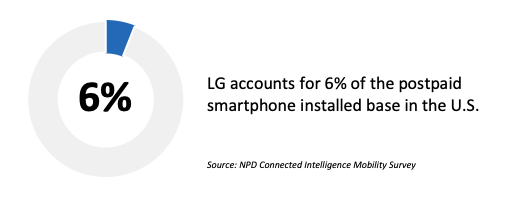
The New T-Mobile is on
T-Mobile finally completed the most speculated merger of the U.S. mobile industry and has taken Sprint, the nation’s fourth-largest carrier, under its umbrella. T-Mobile also announced that its iconic CEO John Legere, who had turned T-Mobile from laggard to leader (in subscriber growth) with its Uncarrier model, has stepped down from his post earlier than the previously announced “end of April” schedule. There is currently no specific timeline as to how T-Mobile will handle the Sprint brand and services; for the existing Sprint customers and newcomers, it should be “Business As Usual” as Sprint’s retail and online channels will continue to be fully operational for the foreseeable future. On the other hand, T-Mobile immediately ignited efforts to merge network operations, which is slated to give the new organization the upper hand in the 5G wars. T-Mobile has announced that the carrier has begun deploying mid-band 5G spectrum (on Sprint’s 2.5 GHz mid-band assets) in Philadelphia, which will be followed by other metropolitan markets.
The NPD Take:
- The merger’s completion will clearly change the competition dynamics in the U.S. mobile market as this is beyond a 1+1=2 equation. Neither T-Mobile and nor Sprint could previously claim a leading position in network marketing, but their combined low- and mid-band 5G spectrum make the new T-Mobile organization one of the, if not the, strongest 5G provider out there in the short run. T-Mobile’s large assets in the 600 MHz low-band provides extensive coverage coupled with Sprint’s significantly faster mid-band spectrum and this will be a major threat to AT&T and Verizon, who primarily bank on their ultra-fast/limited coverage mmWave networks for their 5G push.
- We currently do not have any indication of T-Mobile’s timeline in integrating Sprint to operations. While a long integration process may pose the threat of postpaid competitors poaching Sprint customers, T-Mobile is relatively safe considering that the price delta between Sprint’s rate plans and those of its competitors. On the other hand, Sprint also has a substantial enterprise customer portfolio (thanks again to heavily discounted plans), and a lack of focus in this space might allow competitors to go after these accounts.
Boost Mobile responds to Metro and Cricket
Last week we reported on T-Mobile and AT&T’s prepaid assault with the former debuting a 2GB/$15 rate plan and the latter immediately following suit. One of our key takeaways was how these aggressive rate plans would impact Sprint’s Boost Mobile brand, which will soon be transitioned over to Dish Network. It took Boost Mobile a week to respond to competitors with an identical rate plan that offers 2GB of data at $15/month, but there is a (big) catch. The rate plan is offered to new customers during their first two billing cycles; the rate plan then changes to a $30/month option (with no boost in the data bucket amount) after 60 days. It is also noteworthy to mention that subscribers of this new plan can also not take advantage of Boost’s switcher offers on devices (such as a $29 iPhone 6s or free Samsung Galaxy A10) activated on its regular unlimited plans.
The NPD Take:
- Boost Mobile’s plan is significantly inferior to the new plans announced by T-Mobile and AT&T (and their prepaid brands) as it runs for a very short period, and more importantly, the subscribers’ data access is terminated when they hit the 2GB. Plans offered by competitors offer unlimited 2G access (enough to check emails and do very basic browsing) once the 2GB high-speed access is fully used.
- Boost Mobile subscribers’ journey to the upcoming Dish Network service will soon begin as T-Mobile and Sprint officially finalized the merger. Sprint limiting the new Boost Mobile plan pricing to only 60-days can possibly be an indication of the timing of the exodus.
LG ditching the G Series flagship series?
According to reports based on the South Korean media, LG is getting ready to drop the G series flagships phones from its roadmap. The OEM is allegedly planning to launch a new phone series based on a low-tier Qualcomm chipset. Notably, all of the Android flagships in the market (including LG’s recently launched V60 Thinq 5G) run on Qualcomm’s 800-series Snapdragon chipsets and LG’s decision to downscale is considered as a signal to its decision in dropping the G series phones from its lineup. Notably, LG released a vague statement discussing the tech superiority of its G series phones and that they would soon share more.
The NPD Take:
- LG has long been struggling with its flagship series (the V and G series phones) that have not been able to “connect” with consumers. The OEM’s design innovations such as curved form factor (the G4), modular built (the G5), the boombox screen (the G7) or the gesture controls (the G8) have been great marketing statements but they were simply marginal features at best. This disconnect has cost LG dearly as it lost significant market share to existing rivals such as Samsung and newcomers such as Google and OnePlus.
- LG’s diversified portfolio strategy with the G and V series phones have lately been confusing due to overlapping specs and launch schedules. The V series, which initially emerged as a video-centric franchise, has recently been a replica of the same generation G series model (or vice a versa). A more focused branding effort on only a single high-end franchise can help LG win back some of the lost ground.